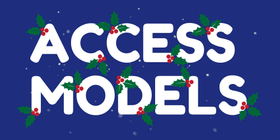Model railways have captivated hobbyists for generations, offering a unique blend of history, engineering, and artistry. Among the various scales available, OO gauge and N gauge are two of the most popular choices. This detailed guide explores the intricacies of OO and N gauge model railways, delving into their characteristics, advantages, and drawbacks, helping enthusiasts make an informed decision.
What is OO Gauge?
Overview
OO gauge is a model railway scale commonly used in the United Kingdom. It operates on a scale of 1:76.2, which means that one unit on the model equals 76.2 units in real life. The track gauge (distance between the rails) for OO is 16.5 mm.
Pros of OO Gauge
- Detail and Realism: OO gauge models are renowned for their detail, allowing for more realistic and intricate designs.
- Ease of Handling: Their larger size makes them easier to handle, particularly for those with less dexterity.
- Availability of Models and Accessories: OO gauge has a wide range of models and accessories, making it easy to find specific items.
- Ideal for Scenic Layouts: The size of OO gauge is conducive to creating detailed scenic layouts.
Cons of OO Gauge
- Space Requirements: OO gauge requires more space, which can be a limiting factor for those with limited room.
- Cost: Generally, OO gauge models and accessories tend to be more expensive.
Some of what we offer for OO Gauge
Explore our OO Gauge range now!
What is N Gauge?
Overview
N gauge models are smaller than OO gauge, with a scale of 1:148 in the UK. The track gauge for N gauge is 9 mm, making it almost half the size of OO gauge.
Pros of N Gauge
- Space Efficiency: N gauge is ideal for those with limited space. It allows for complex layouts in a smaller area.
- Cost-Effectiveness: Generally, N gauge models are less expensive than OO gauge.
- Ideal for Large Layouts: The smaller size means you can create larger and more complex railway systems.
Cons of N Gauge
- Detail: While still detailed, N gauge models can't match the level of detail found in OO gauge due to their smaller size.
- Handling Difficulty: Their small size can make them more challenging to handle, especially for those with larger hands or less fine motor control.
Some of what we offer for N Gauge
Explore our N Gauge range, we have a wide range of:
Comparing OO and N Gauge
When deciding between OO and N gauge, consider the following factors:
- Space: How much room do you have for your layout?
- Budget: What is your budget for models and accessories?
- Detail vs. Scale: Do you prefer detailed models or the ability to create larger layouts?
- Handling: Are you comfortable working with smaller, more delicate models?
Conclusion
Both OO and N gauge model railways offer unique advantages and cater to different preferences and constraints. Whether you prioritise space, detail, or cost, there is a scale that will suit your needs. Ultimately, the choice between OO and N gauge depends on your personal circumstances and what you value most in your model railway hobby.


4 comments
John Neate
In addition to my e-mail just sent :
The house does have an attic which is another option to the garage but as I am an old twerp the contortions seem a bit of a challenge !
Thank you chaps,
All the best,
John
John Neate
I live in a typical three bed house in the Staffordshire Moorlands and I am in the throes of clearing out the attached garage which is just large enough for a small family car – the garage is not used at the moment for our car.
Do you think I can create a fairly simple 00 gauge layout in a 7ft x 2ft table size ?
Any ideas or suggestions would be greatly appreciated.
All the best,
John
Paul
Sounds like a different brand, make mistakenly marked up as hornby
martin
hi to you, iv recently bought 2 packs of straight track on ebay that states hornby oo /ho gauge,but i have found it to be not compatible with my existing track, it is bigger in height and the fish plates are very different, i am new to this hobby and would appreciate any feed back,thanks martin.